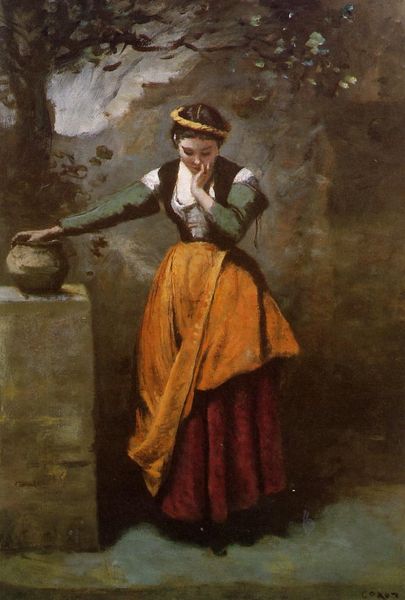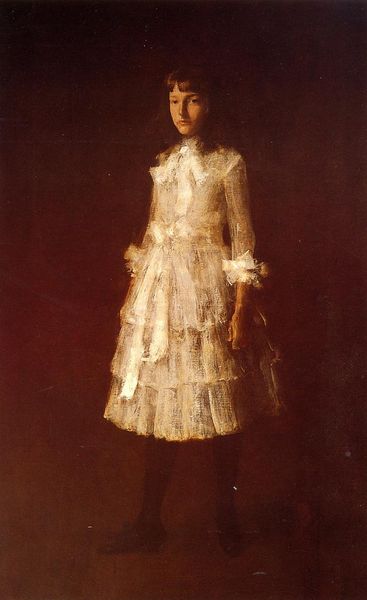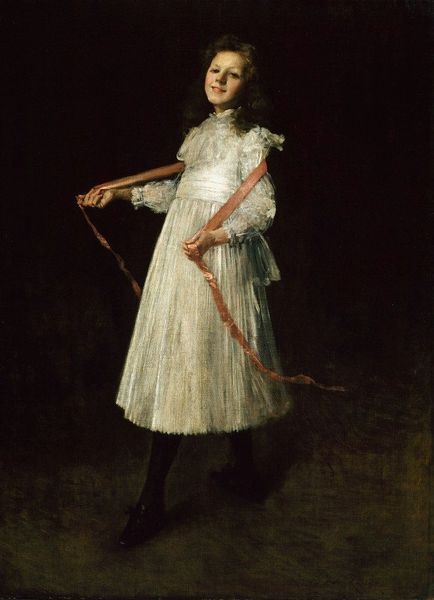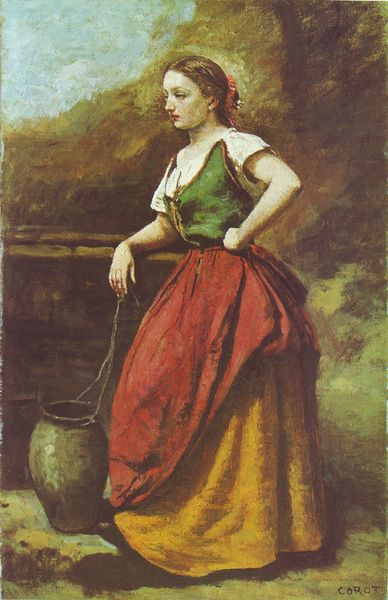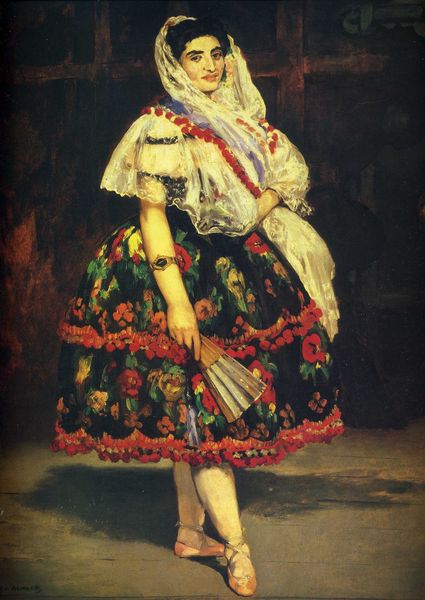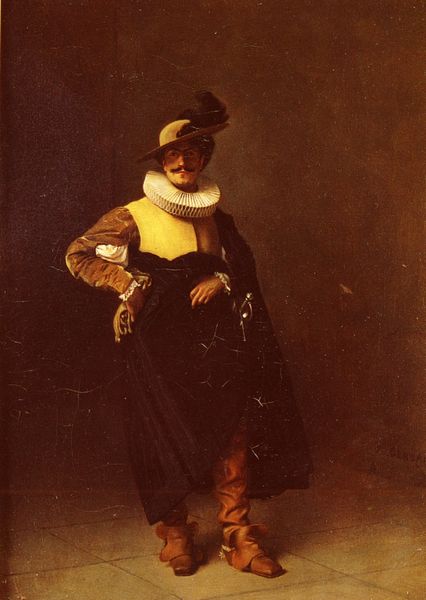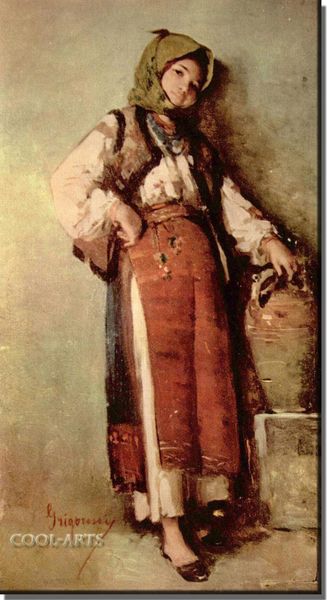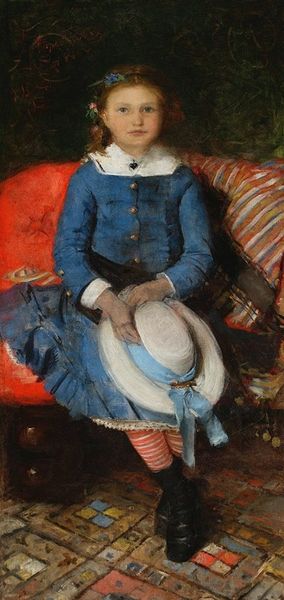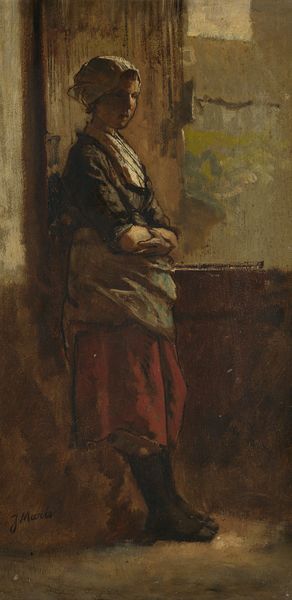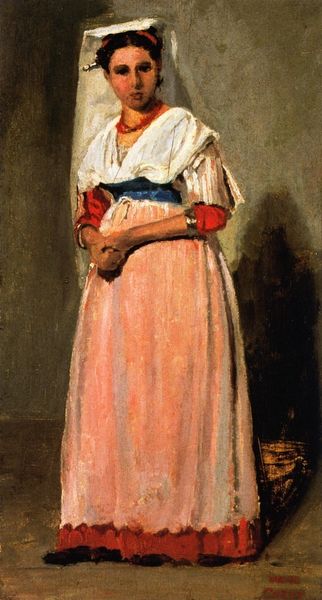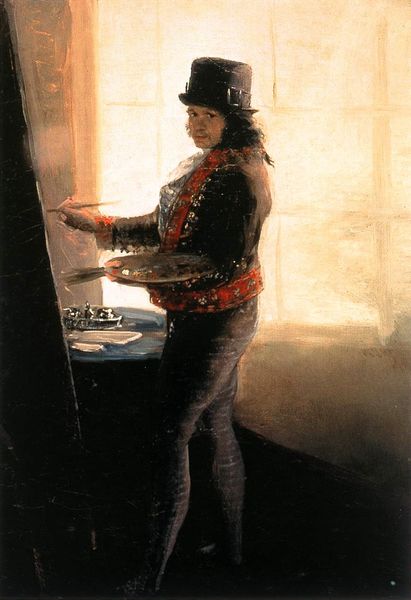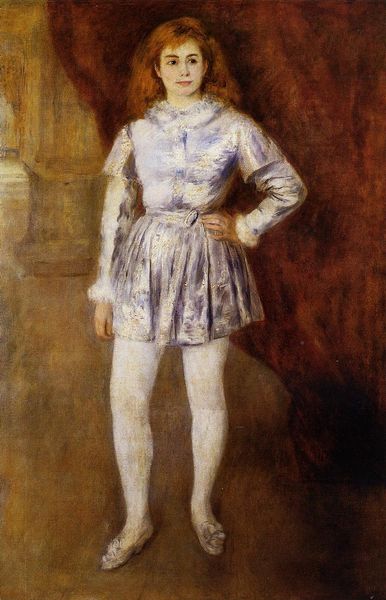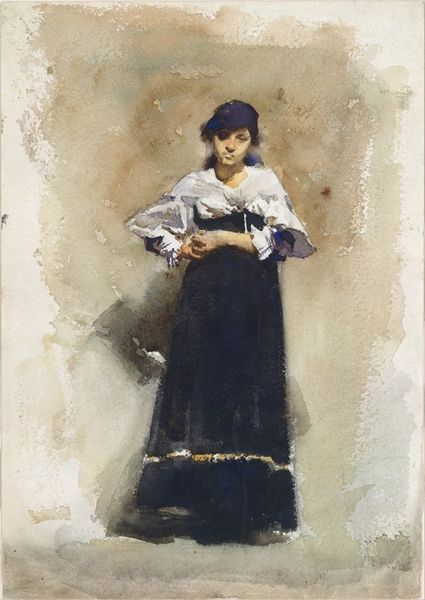
oil-paint
portrait
impressionism
oil-paint
oil painting
genre-painting
portrait art
modernism
realism
Dimensions: 165.58 x 99.54 cm
Copyright: Public domain
Curator: Painted in 1886 by William Merritt Chase, this is "Portrait of Erla Howell (Little Miss H.)," an oil painting currently residing in a private collection. It’s an exquisite example of Impressionist portraiture. What are your first impressions? Editor: There's something unsettling about this little girl. Her face seems almost too knowing for her age, and her expression doesn’t quite match the vibrance of the colours used in the painting, especially the dress and red shawl. Curator: You bring up an interesting point. I’ve always seen the dark hair surrounding her face as something protective, an almost halo-like visual indicator of childhood innocence. Chase often used chiaroscuro in his portraits, drawing a contrast between light and darkness, which here enhances a symbolic purity. Editor: Perhaps, but there's a confinement to that darkness, a kind of stifling of her presence. Look at her hand resting on that metallic object – a weird, almost ghostly armoire or pipe structure – it gives her an older appearance. Is it truly innocence, or the performance of it? And for whom is that performance? Considering the Gilded Age context, the portrait could offer a lens onto childhood and gender expectations. Curator: Indeed. Wealth and social standing of the Howells family during this period surely play into that discussion of performativity and expectations. I’m also wondering about other potential symbolic cues from her attire. Floral dress could signify blossoming youth, a delicate and vulnerable stage of life. Editor: The yellow shade feels a bit aged though. We must acknowledge how portraiture serves to solidify social norms, especially around who is remembered and how, reflecting structures of privilege that persist to this day. It prompts one to ponder childhood itself as a constructed concept within societal frameworks. Curator: I understand your concerns. What interests me here is not the sociological background but how symbols can speak differently depending on one’s perspective. Editor: This is the enduring challenge, I think. While striving to honor its historical richness, how do we reconcile with its social politics and make it resonant in a world much changed? Curator: Indeed, it asks more from us now, and from her memory too.
Comments
No comments
Be the first to comment and join the conversation on the ultimate creative platform.
